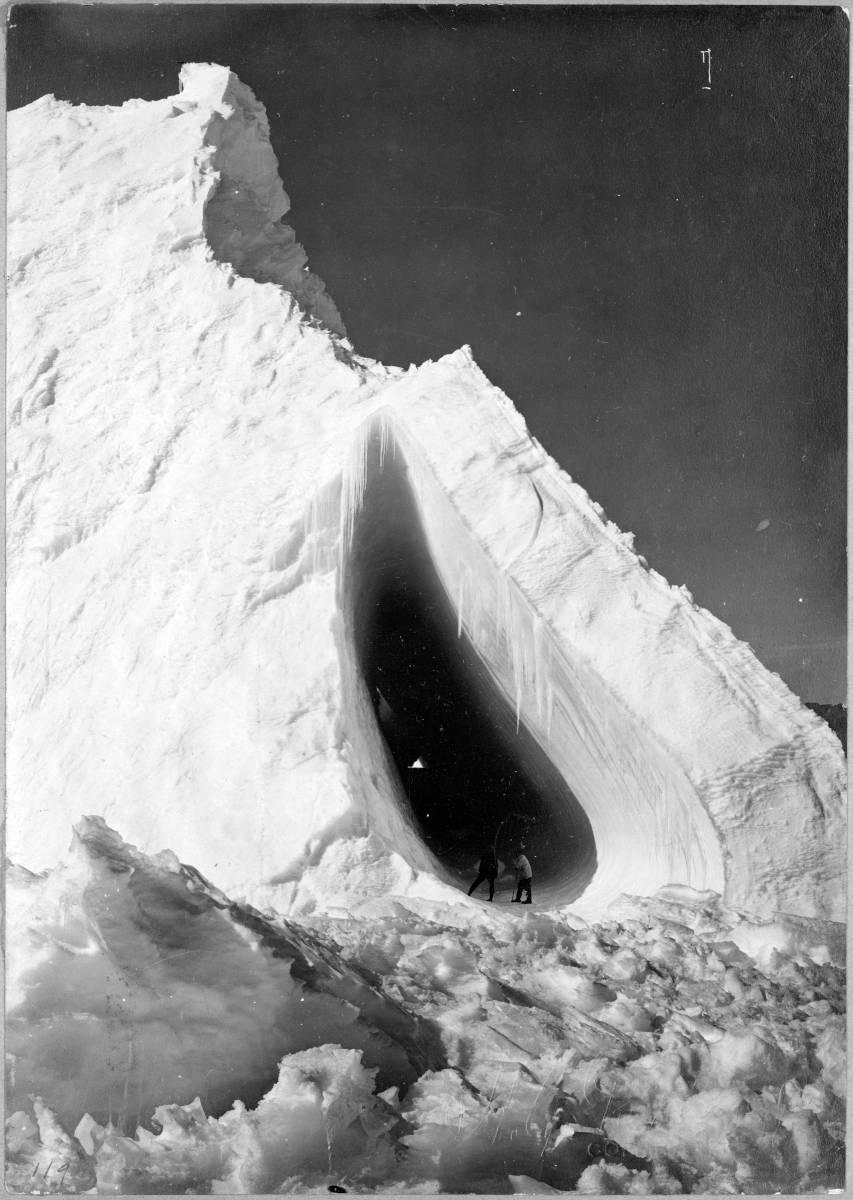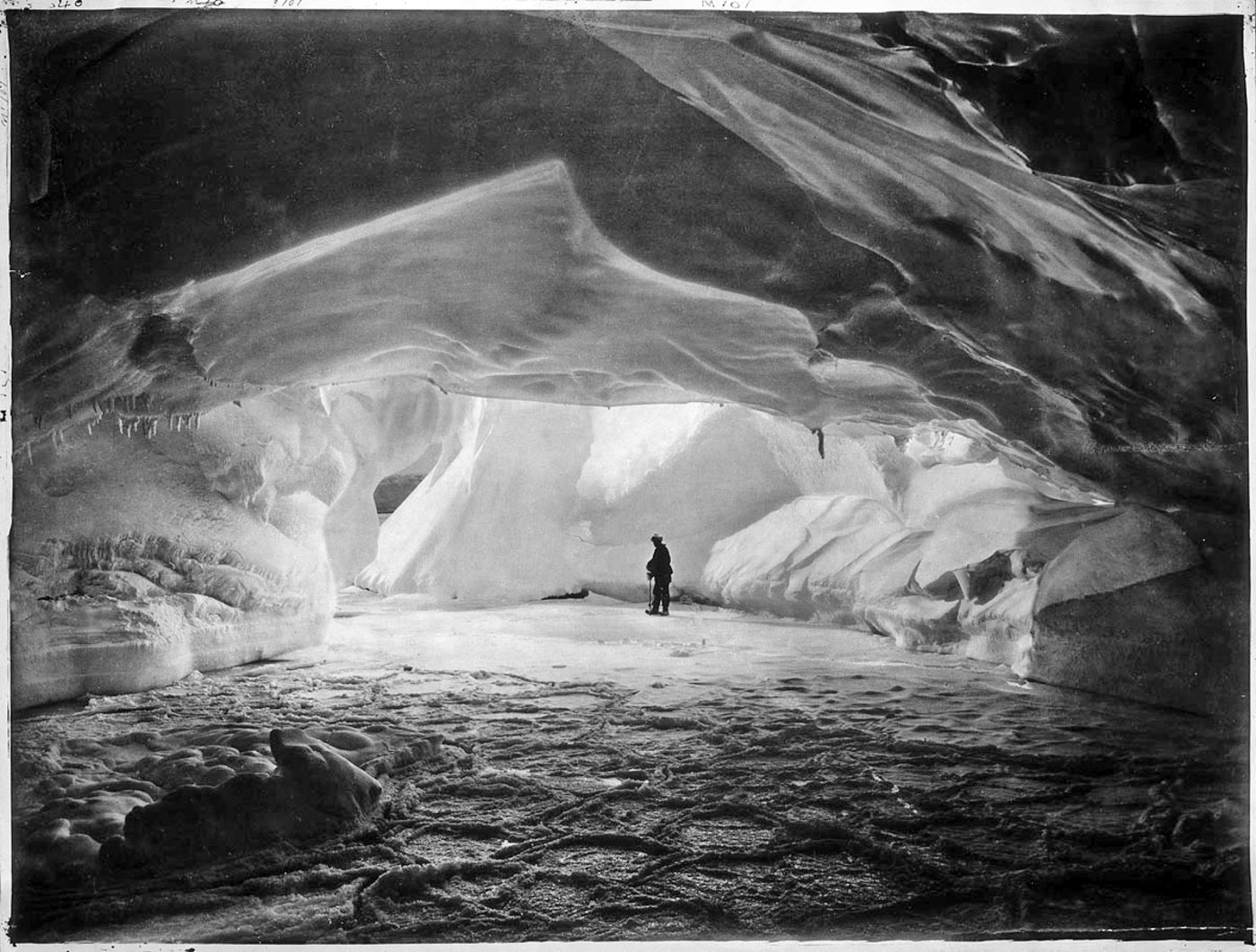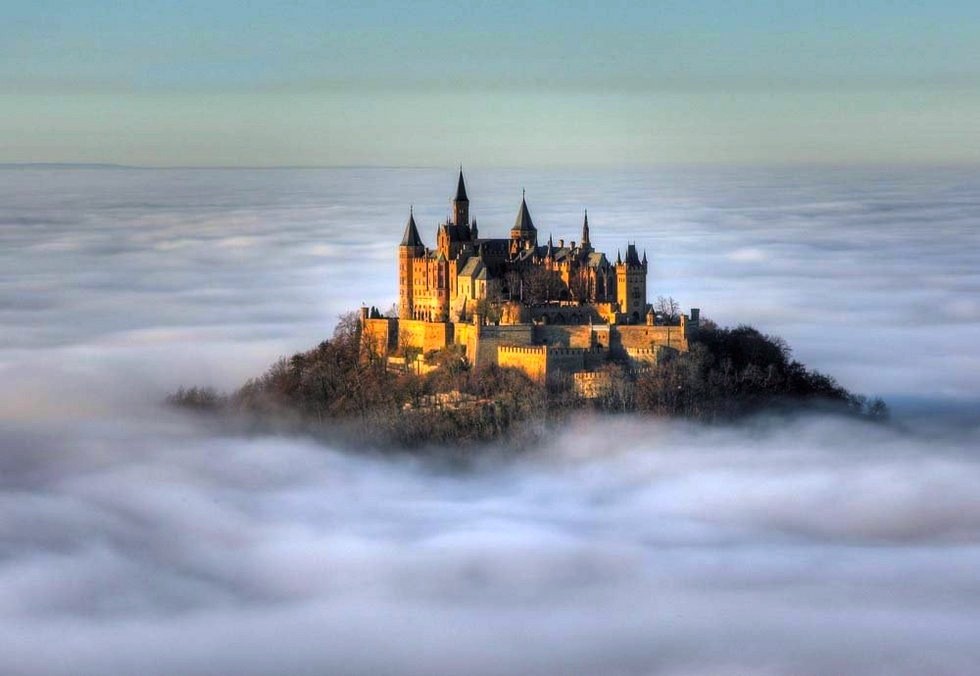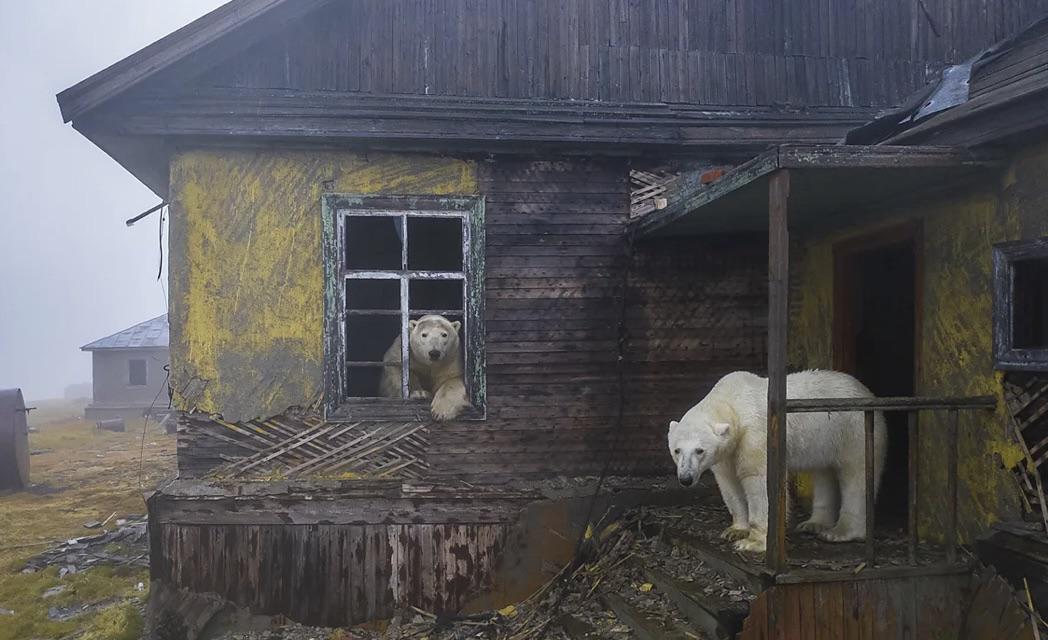At the turn of the 20th century, the race to the South Pole was one of the greatest challenges of exploration. In a time before modern technology, brave men ventured into the harshest and most unforgiving landscapes on Earth, facing extreme cold, blizzards, and the constant threat of exhaustion and starvation. Among these explorers were members of the 1911 Antarctic expeditions, who left behind hauntingly beautiful photographs—one of the most striking being a glimpse inside an ice cave, deep within the frozen wilderness.
Amidst the struggle for survival, nature revealed its own masterpiece. The ice cave was an ethereal sanctuary, where time seemed to stand still. Massive frozen walls, shaped by centuries of wind and snow, glowed with an otherworldly blue light as the sunlight filtered through layers of ancient ice. Inside, explorers found themselves in a world unlike anything they had ever seen—where stalactites of ice dripped like frozen chandeliers and the ground crunched beneath their boots in absolute silence.
For a brief moment, they were not just conquerors of the cold but witnesses to a place untouched by human hands. The contrast between the dangerous, barren Antarctic landscape outside and the quiet serenity of the cave must have been overwhelming. It was a place that felt more like a frozen cathedral than a natural formation—a reminder that even in the most extreme environments, there is beauty beyond imagination.
The year 1911 marked the final stretch in the race to the South Pole. Two legendary explorers, Roald Amundsen of Norway and Robert Falcon Scott of Britain, led separate teams toward the ultimate goal: to be the first humans to reach 90 degrees south, the bottom of the world.
Amundsen’s team, relying on sled dogs and careful planning, reached the pole first on December 14, 1911. Scott and his men arrived five weeks later, only to find the Norwegian flag already planted. Defeated and weakened, Scott’s entire team perished on the return journey, succumbing to exhaustion and freezing temperatures. Their diaries, photographs, and artifacts would later tell the tragic yet awe-inspiring story of their journey.
The photograph of the ice cave stands as one of the few surviving visual records of these early expeditions. At the time, photography in the frigid conditions of Antarctica was incredibly difficult. Cameras had to be carefully handled to prevent freezing, and film had to be developed under extreme conditions. Yet, against all odds, these images survived, giving us a rare and breathtaking glimpse into the past.
The play of light in the ice cave reveals the depth and history of the Antarctic ice sheet, which has existed for millions of years. Each layer of ice tells a story of past climates, trapping tiny air bubbles that hold secrets about Earth’s atmosphere long before humans walked the planet. What these explorers witnessed inside that cave was not just a frozen landscape but a portal into deep time—a place where history is quite literally preserved in ice.
Today, over a century later, Antarctica remains one of the most mysterious and least explored places on Earth. Scientists continue to study its ice, unlocking clues about climate change and the history of our planet. The ice caves of Antarctica, much like the one in the 1911 photograph, still exist, though they are constantly shifting and evolving as the glaciers move.
Modern adventurers and researchers now explore these caves with advanced equipment, capturing high-resolution images and even 3D scans to study their structure and beauty. But nothing quite compares to the raw, unfiltered experience of those first explorers, who entered these frozen chambers with nothing but their courage and curiosity.
The image of the 1911 ice cave is more than just a stunning photograph—it is a testament to the resilience, determination, and awe-inspiring bravery of the men who dared to journey into the unknown. It captures a fleeting moment of peace and beauty amid one of the most grueling expeditions in human history.
As we look at this hauntingly beautiful scene today, we are reminded of the endless wonders our planet holds, many still waiting to be discovered. Just as those early explorers found themselves mesmerized by the shimmering walls of ice, we too can marvel at the sheer magnificence of nature—and the indomitable spirit of those who risk everything to uncover its secrets.







